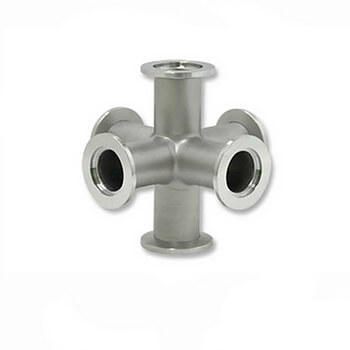Revolutionizing Vacuum Systems with KF Vacuum Flange Technology
Introduction to Precision in Vacuum Engineering
Vacuum systems are vital to many cutting-edge industries, from scientific research to semiconductor manufacturing. These systems rely on an intricate network of components that must work seamlessly to maintain ultra-clean, controlled environments. One of the most crucial elements in these systems is the flange—the component responsible for connecting vacuum parts securely. Among the many types of flanges, the KF Vacuum Flange stands out for its efficiency, versatility, and ease of use. As vacuum technology advances, these flanges continue to redefine expectations in vacuum sealing solutions.
What Makes a KF Vacuum Flange Unique?
The KF Vacuum Flange (short for Klein Flange) is widely used in low to medium vacuum applications. It features a quick-release clamping system, which allows for fast assembly and disassembly without compromising the vacuum seal. Its standardized design ensures compatibility across a wide range of systems and components. Typically made of stainless steel or aluminum, these flanges offer corrosion resistance and structural integrity even under varying thermal and pressure conditions.
Another defining characteristic is the use of an elastomer O-ring seated within a centering ring. This not only enhances the vacuum seal but also minimizes the possibility of contamination. KF flanges come in various sizes, generally ranging from KF-10 to KF-50, allowing engineers to tailor their systems according to the specific requirements of their vacuum chamber setup.
Importance of Sealing in Vacuum Chamber Systems
A vacuum chamber is a sealed enclosure where air and other gases are removed to create a low-pressure environment. These chambers are essential for processes like thin-film deposition, electron microscopy, space simulation, and material testing. The integrity of a vacuum chamber relies heavily on the quality of the seals between its components. If there's any leakage, even at microscopic levels, the entire process can be compromised.
That's where the KF Vacuum Flange excels. Its precision engineering ensures leak-tight connections that hold up against prolonged use and high-stress operations. Because vacuum environments are so sensitive to contamination, the choice of flange plays a pivotal role in maintaining purity and stability within the chamber. A flawed seal can introduce foreign particles or gases, degrading the outcome of the process or even damaging sensitive equipment.
Applications Across Diverse Industries
The adaptability of the KF Vacuum Flange has led to its widespread use in numerous industries. In research laboratories, KF flanges are a staple for experimental setups that require frequent changes and realignments. Their quick-assembly design saves valuable time without sacrificing accuracy or performance.
In industrial settings, especially in manufacturing environments that involve high temperatures or chemical exposure, the robustness of KF flanges ensures long-lasting performance. Their application in food packaging, aerospace, and pharmaceuticals highlights their versatility. In all these scenarios, the vacuum chamber serves as the critical space where precision operations take place, and the KF flange ensures that environment remains untainted.
Design Considerations and Maintenance
While the KF Vacuum Flange offers a high degree of reliability, proper handling and maintenance are essential to sustain performance. During installation, it’s important to inspect O-rings for wear or contamination, as even a minor defect can lead to a compromised seal. Cleaning protocols should be followed to prevent outgassing or particulate buildup, which could affect the vacuum quality.
Regular inspection of flange surfaces and clamps can extend the operational life of the system. It’s also recommended to avoid over-tightening, which can deform the O-ring or misalign the centering ring. Attention to these small details ensures that the vacuum chamber maintains optimal internal conditions, whether it’s operating under high vacuum or undergoing rapid cycling.
The Future of Vacuum Technology
As technology pushes toward smaller, more efficient, and more powerful systems, the components that support these innovations must evolve too. The KF Vacuum Flange is poised to remain a cornerstone of vacuum infrastructure thanks to its modular design and unmatched ease of use. Emerging fields like quantum computing, nanotechnology, and clean energy will demand even higher standards of vacuum integrity and adaptability—areas where the KF flange is already proving to be invaluable.
Advancements in materials science may lead to even more resilient flange materials, possibly incorporating composite or ceramic elements for extreme environments. Likewise, improvements in automation may see KF flanges integrated into smart systems capable of self-monitoring and maintenance alerts.
Conclusion: Efficiency Through Smart Engineering
In the world of vacuum systems, precision and reliability are non-negotiable. Whether used in academic research, industrial production, or advanced technological development, the KF Vacuum Flange serves as a linchpin that connects and sustains critical components within a vacuum chamber. Its simplicity, durability, and adaptability make it an enduring choice for engineers and scientists alike. As industries continue to push boundaries, the role of the KF flange will only grow more significant, proving that even the smallest parts can have the biggest impact.
For more info:-


Comments
Post a Comment